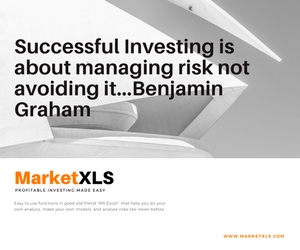More than $100,000,000,000 were spent on pharmaceutical M&A in the first six months of 2018. Here is how to tell if your biotech is a payday waiting to happen…
The California Gold Rush has begun anew… but this time the gold comes in the form of test tubes, published papers and CNBC interviews. Over the last six months, small (and not so small) biotechnology companies have been gobbled up by famished Big Pharma buyers at an accelerating pace. Common “take out premiums” have been 40, 60, even 80% of a company’s going share price. Many experts believe that we are only in the early moments of a biotechnology M&A party that could make shareholders rich swiftly. Identifying and buying such biotechs with an eye towards a quick cashout would be great work if you can get it… and you can get it if you try.
Here are three signs that a biotechnology company will soon be sold for big money:
1) Your Company is Down, But Not Out.
If you are a frequent reader of this blog, then you know that one of my core beliefs is that share prices assigned by Wall Street know-it-alls are often insane. Despite hoards of MBA’s armed with hundreds of loaded spreadsheets, often times valuations are simply driven by assumptions. And assumptions can boil down to simple human factors like mood.
That’s right, the sum value of hundreds of scientists’ blood, sweat and tears can boil down to the whims of Wall Street. Which therapies are in vogue at the moment? Which technologies sound sexy and fresh? Which kids at the biotechnology party are this week’s cool kids?
Such was the case with Celgene ($CELG). Founded way back in 1986, Celgene had been one of Wall Street’s original Billionaire Biotech Babies. It grew from a scrappy biotech start up to a giant provider of key cancer drugs. Celgene’s most important drug was a blockbuster for blood cancer known as Revlimid. Between 2010 and 2017, the company’s share price rocketed from $25 to $139.
But somewhere along the way, Wall Street’s euphoria around Revlimid gave way to fear about patent expirations, new competition, and a lackluster pipeline. Poor $CELG watched it’s share price plummet from $139 all the way down to $60 in less than 18 months. Was the former Belle of the Biotech Ball suddenly losing money? Was revenue in a free fall??? Not at all!!! In fact, 2018 revenue was only slightly down from it’s 2017 peak, while the company continued to churn out billions of dollars in profit.
Celgene tried everything. New and exciting collaborations with well known biotech dynamos. Promising acquisitions of smaller companies with loaded pipelines. A media friendly policy that sought to engage with Wall Street critics. No matter how they tried, poor $CELG was just viewed as a “has been” by the Wall Street fast money crowd.
This made them very appealing for Bristol Myers Squibb. $BMY hasn’t been sexy in a long time. They simply grind out predictable cash flows and profits, year after year, decade after decade. $BMY’s investors are a totally different breed than typical biotech investors; a well supported dividend and modest, predictable price appreciation are what pensions and widows look for in their $BMY holdings. A new source of steady cash flow with a depressed stock price looked like an opportunity in this context. Now one of Wall Street’s biggest pharmaceutical marriages ever has been arranged. Celgene will no longer be at the mercy of Wall Street temper tantrums, and Bristol Myers Squibb will get its hands on some lightly used assets at a bargain price. If you bought $CELG at $138 two years ago, it’s an unhappy ending to your story. If you bought at $60 just a few months ago, you are about to make out like a bandit. Take note.

2) Your Science is Fabulous. Your Bank Account isn’t.
You would think that if you could laboriously develop a better medicine to meet an unmet need, and backup that new medicine with strong scientific proof, that the end product would fly off the shelf. There are still so many unmet needs in the medical community, surely society would swiftly embrace anything that would help suffering patients, right? Ummm. Not so much.
In the tortuous journey from concept to reality, medicines actually face two massive barriers. Only the first is purely scientific. The other, sometimes larger, hurdle for a new medicine to gain widespread adoption is an American Medical System that often feels like an episode of the Twilight Zone. In order for an expensive new medicine to gain traction, it must gain acceptance from a mix of public and private insurers. If its a novel method of action, distributors or hospitals may struggle to accommodate a new way of administering or storing the medicine. Finally, many physicians are risk averse, poorly incentivized, or simply “stuck in their ways” and may need very substantial convincing or coaching. All of this costs money. Lots and lots of money. It’s not uncommon for an investment of hundreds of millions or even a billion dollars to be necessary to launch a new drug. That is AFTER the science has been proven through rigorous clinical trials.
Today’s M&A landscape exists largely because it allows different kinds of people to form different kinds or organizations that excel at certain niche tasks. There are few organizations on earth with as much financial and political muscle as a major Big Pharma concern. But these corporate giants are often poor at scientific innovation for cultural reasons. Young upstart biotechs, often founded by starry eyed scientists looking to change the world, can be shockingly inventive in the science lab. But they simply don’t have the mental or financial resources to navigate the treacherous jungle of red tape that stands between medical breakthroughs and patients. Thus, M&A.
There are a few tell tale signs you can look for if you want to mine for M&A gold in this vein. First, look for biotechs with agents that have already passed through stage one and stage two studies. These studies are typically just designed to prove the basic viability of a concept. But they can still cost mountains of cash to complete.
When you hear about a smallish company that has attained promising phase 2, or even phase 3 results on a new molecule, immediately go to Etrade and find out how much cash they have left on their books. This can be found by quickly checking the company’s balance sheet and cash flow. If you are semi literate in accounting, the question is, “How much cash per quarter is this company burning?” For example, if they are burning approximately $25 million per quarter, they have a good stage two data, but only $75 million left in the bank, then you know that something needs to happen. Companies with hard won good data don’t want new agents to wind up in the garbage can just because they ran out of cash at the wrong moment. If you are not accounting literate, do as much reading on the company as possible, or check an analyst’s report. “Cash Burn” is a common metric, and most analysts will point out how long a company can operate without some kind of capital raise.
Big Pharma execs really like to minimize risk. That is typically why they have built careers with big, established companies. By allowing scrappy bands of scientists to do the most risky lab work on their own, they are able to swoop in when the scientific risk is more or less controlled. Big Pharma eats red tape for breakfast. When the science is proven, playtime is over and the “adults” are ready to take over. If you are lucky enough, or smart enough, to time your biotech investments just right, you can reap the rewards of these transactions.
3) Your Controlling Shareholder is at the End of Her Career. Or the Beginning of Her Career.
The funny thing about the world of biotech is that companies can be valued at a $ 1 Billion or more without selling a single product. All of the value is in the assets that the company has developed, which will theoretically lead to boku bucks one day. Theoretically.
So you can understand why a 67 year old scientist founder might be tempted to take a giant payout from Big Pharma and move to Boca Raton. Let’s consider the math. It’s not unusual for a biotech with a promising phase two product and good data to be valued as high as $500,000,000. Now, at this point the founding team has probably been laboring in obscurity for years, and they likely have taken on investors to fund their expensive biotech dreams. Its rare for a founder to retain majority control throughout the product development process because it’s just so expensive. However, the founder, or founding group, could retain 5 or even 10% of the company’s shares. That may well make him or her the largest, most influential shareholder. So, if Pfizer offers to buy that company for $500,000,000, some ageing nerd with a PhD may well be walking away with $50,000,000. That is. A. Lot. Of. Money.
By the way, few scientist founders achieve those kinds of take out offers without suffering through a long career of disappointments and setbacks. They may well understand that the current $500 million valuation that the market is assigning to their still unproven company could vanish with one bad trial result. If they have been burned once, twice, or three times in their younger years, sometimes they know a good deal when they see it. If you chose to take a biotech ride with an experienced, elder founder, you may well have the chance to ride off into the sunset together.
Another scientist founder who is likely to sell his or her company is a very young, inexperienced entrepreneur. This may seem counterintuitive. Why would a young person, with many decades ahead of him, not try to “go all the way” and grow the company to maturity? Aren’t young people supposed to have more balls than brains?
Sometimes a young founder will insist on “going all the way.” But they may well have certain naive qualities that allow them to be duped by more sophisticated corporate deal makers. The pitch might go like this:
“Why Dr. X, as well as your doing due to your astounding entrepreneurial skills, imagine how well you could do if you teamed up with Pfizer? What could you do with our unlimited resources? No more worrying about paying your bills, just unlimited scientific progress!!! Why, with our resources, your could finally change the world!!”
Believe it or not, a lot of young people have bought into these kinds of pitches. But it rarely works out the way the young entrepreneur envisions. Ask everyone who ever sold a company to Facebook. Massive mega corporations tend to be poor places for formerly independent entrepreneurs to thrive. But don’t worry, Dr X still walks away with his $50,000,000. If you identify the right dreamer, with the right technology, at the right time, you can walk away rich too.
M&A will continue to thrive in the world of healthcare investing because it works. Most of the pills in your medicine cabinet today started out as the brainchild of a scientist founder. The pills wound up in your cabinet because Big Pharma doesn’t often take “no” for an answer. Along this journey of discovery and commercialization, a lot of people made a lot of money. Why not you too?






More Stories
3 HOT NEW BIOTECH LAUNCHES FOR YOUR SWELTERING SUMMER
IONIS PHARMACEUTICALS: THE LITTLE BIG PHARMA?
HOT BIOTECH STOCKS FOR 2024: THE YEAR WHERE CASH IS KING